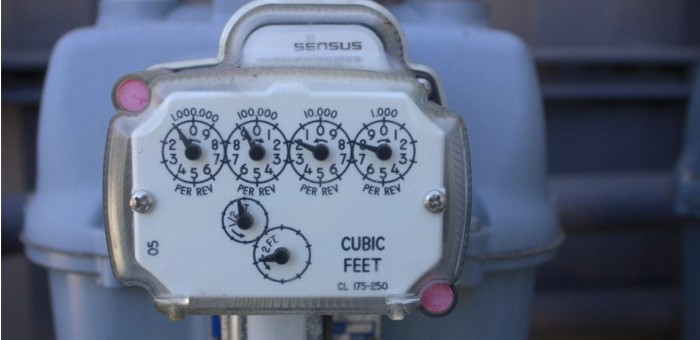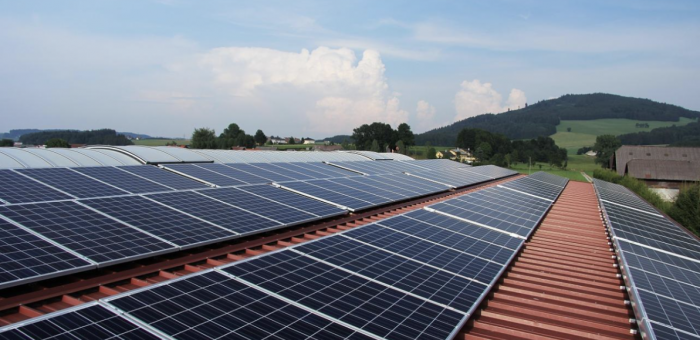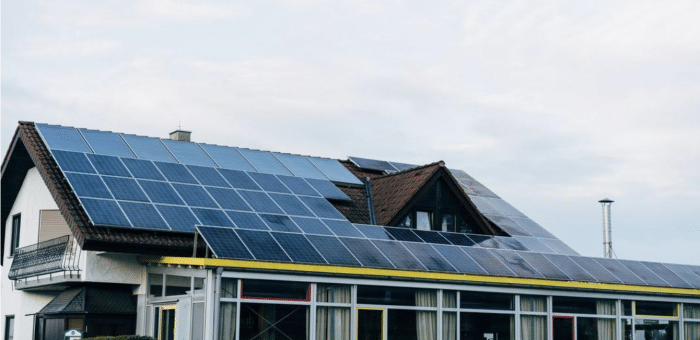Are you concerned about rising energy costs? Looking for ways to cut back on your electricity bill? You’re not alone. Many Texans have noticed that their monthly energy bills are skyrocketing, and they want a solution to the problem.
Fortunately, there are plenty of tricks and tips to help consumers reduce electricity bills and stop wasting energy.
Weatherstripping window jambs, exterior doors, and garage doors reduces energy loss and increases energy efficiency. It also reduces the average cost of heating your home. Not sure how weatherstripping works? We have you covered.
Learn about the different kinds of weatherstripping and how weatherstripping doors and windows will impact your electricity bill.
Click on a section to skip directly to it:
What Is Weatherstripping?
Weatherstripping for windows and doors is a technique for making your home truly airtight.
Window and door frame weatherstripping keeps out cold air in winter. Your home stays warm and comfortable, and you don’t need to spend as much energy on heating.
Weatherstripping is useful in the hot Texas summers, too. Insulating your home means that the cold air from your air conditioner stays in the house. You’ll save on your cooling bill because you won’t leak cold air.
The US Department of Energy recommends using weatherstripping for your doors and windows. The only question is, which type of weatherstripping is right for you?
The Different Types of Weatherstripping
It’s important to look at the conditions in your home and select the kind of weatherstripping that fits your needs. Here are the most common kinds of weatherstripping.
1. Tubular Rubber
Tubular rubber weatherstripping relies on either vinyl or rubber tubes. The tubes normally come ready with a flange along their length, making it easy for you to staple them into place around your door or window frames.
The door or window will also naturally press against them, forming a seal that goes a long way to keep away outside air.
Tubular rubber weatherstripping can be very effective if you install it correctly. You can use it around your doors and windows to create an effective insulation system. It’s attractive and might be the best-looking product on the market.
What’s the downside? Tubular rubber weatherstripping can be a challenge to install. If you’ve never done it before, you could have trouble lining up the tubing correctly. This could make your weatherstripping system less effective than it should be.
2. Tape Weatherstripping
Tape weatherstripping uses either foam or EDPM (ethylene propylene diene monomer) to seal doors and windows.
You can use tape weatherstripping on any doors or windows. Apply it to door frames and to the tops and bottoms of your window sashes. You can also use tape weatherstripping on attic hatches. It’s even a good choice for corners and oddly shaped cracks.
[ctafirst]
Tape weatherstripping is easy to install, unlike tubular rubber weatherstripping. The tape is also affordable. When it’s correctly installed, it’s highly effective.
The downside? The tape isn’t very durable. Some people also think it’s unattractive, especially as it ages and gets worn. If you feel that way, you may decide to use a different weatherstripping system.
If you do use tape weatherstripping, you may also need to replace the tape on a regular basis to make sure it’s working as effectively as possible.
3. Flexible Metal Strip
This type of weatherstripping uses felt that’s been reinforced by a flexible metal strip. You can install it around any door or window or fit it into a door jamb.
A flexible metal strip is easy to install. You can simply glue it into place or use staples or tacks.
Reinforced metal weatherstripping is low-cost, which makes it a good choice if you’re trying to stick to a budget.
However, this type of weatherstripping usually isn’t as effective as other types. It’s subject to wear and tear. Depending on the quality of felt, it could get frayed quickly. It also doesn’t prevent airflow as well as the other kinds of weatherstripping.
4. Self-Stick Plastic
Self-stick plastic weatherstripping is also known as tension seal weatherstripping.
It uses a self-sticking strip of plastic or vinyl to line the inside of a window. Self-stick plastic works best on sliding windows or double-hung windows.
Self-stick plastic weatherstripping is affordable, although it’s more expensive than some other options. If you install it correctly, it’s very effective at stopping airflow. It’s also nearly impossible to see once it’s installed.
What’s the downside? Like tubular rubber weatherstripping, self-stick plastic can be hard to install correctly. If you don’t install it correctly, it can be less effective.
Self-stick plastic weatherstripping can also make it harder to open and close windows, depending on how you do the installation.
5. Vinyl Seals and Foam Tapes
Vinyl seals and foam tape for weatherstripping attach directly to the tops and bottoms of your doors and windows.
They are one of the more affordable weatherstripping solutions, and they are highly effective when installed correctly. The combination of low cost and high level of effectiveness makes them a good choice if you know how to install them correctly.
Yet vinyl and foam weatherstripping can be hard to install correctly, especially if you lack experience in this area. You’ll have to secure the seals and tape to the right side and nail it on. You may also want to paint them.
Some people also find vinyl seals and foam tapes unattractive. They are always visible, so if you don’t like the way they look, they might not be the right option for you.
How Does Weather Stripping Affect Energy Costs?
Weatherstripping saves you money by reducing your energy bills.
How much money weather stripping will save you depends on the size of your home, weather conditions in your area, and also on your typical energy usage.
No two homes are the same, which means that no two energy bills are the same. That’s why Power Wizard provides an individualized plan for each and every customer.
Weather stripping provides some steady reliable benefits for every user.
Reduces Energy Usage
When you apply weather stripping to your home, you’ll reduce your energy usage. You won’t need to use as much electricity to heat and cool your home.
That’s because your home will be protected against outside airflow. In the winter months, you won’t have as much cold air coming into your home. And in the summer, you’ll be protected from the hot outside air.
Lowers Heating and Cooling Costs
Weatherstripping lowers the cost of heating and cooling your home by ensuring that your climate control system doesn’t have to work as hard.
Now, when you heat your home, the warm air won’t leak out through your doors and windows. In the same way, when you cool your home, that cool air won’t flow out through your doors and windows.
Getting rid of those leaks will save you money on heating and cooling costs.
Create a Barrier Against Drafts with Proper Weatherstripping in Your Home
Want a comfortable, draft-free home? Installing the right weatherstripping can achieve that.
Weatherstripping goes a long way to cutting your energy costs. But you can always take a few steps further by finding the best energy plan for your home.
Ready to get started? Start Shopping Now.
More From the Power Wizard Blog
-
Affordable Electric Bill: Power Wizard’s Promise of Protection
Sarah, a proud Texan, knows that everything is bigger in Texas – including the choices when it comes to electricity providers. She’s no stranger to the complexities of deregulated energy markets. With a bustling household, she juggles work, family, and keeping the lights on. But there’s one thing Sarah doesn’t want to juggle: her electric bill. […]
View Article -
Vampire Energy: How Phantom Power Drains Your Wallet and the Environment
Imagine your home filled with silent energy sippers, lurking in the shadows, unnoticed yet constantly draining power and your wallet. Vampire energy, or phantom load, refers to the electricity electronic devices consume, even when turned off or in standby mode. These energy vampires are prevalent in every household and workplace, from the charger left plugged […]
View Article -
The Top Sources of Carbon Emissions in the U.S.
Climate change due to rising global temperature seriously threatens the natural ecosystem. It can result in erratic weather featuring intense drought, heat waves, melting ice caps, warming oceans, and increased storms when left unchecked. As the impact of climate change worsens, the risk of biodiversity loss and human extinction gets bigger. Table of Contents What […]
View Article -
California Solar Tax Credit & Incentives for Residential Rooftop Solar
Are you considering investing in residential solar panels in California? You’re not the only one. Research shows that California was ranked number one out of 50 states in 2022 for solar power generation, with more than 11 million homes powered by the sun. A major reason why solar power is popular statewide is that prices have dropped […]
View Article -
What Should You Include in an Energy Efficiency Audit?
Rising energy costs mean higher electricity bills, and for the average homeowner or business, a little savings each month can add up to extra cash at the end of the year. If you’re looking for ways to reduce your home’s energy consumption, performing a home energy audit is a great place to start. Table of […]
View Article -
How to clean your solar panels
Click on a section to skip directly to it: Why is it important to clean your solar panels?Solar panel cleaning: a step-by-step breakdownMake sure you’re saving the most on your monthly energy bill Have you considered installing a renewable energy source at your home? Power Wizard recommends trying solar energy, which accounts for 3% of […]
View Article -
How to Reduce Your Carbon Emissions
Click on a section to skip directly to it: Why is it necessary to lower carbon emissions?Steps to take to minimize your carbon emissionsReduce your carbon emissions with carbon offsets Carbon emissions refer to the measure of the impact of human activities on global warming and climate change. Every person on the planet contributes, directly […]
View Article -
Solar Energy Credits: Everything You Need to Know
Solar panels are a great way to save money. They are energy efficient and reduce the impact of electricity production on the environment. You can get them installed on the roof of your house to reduce your reliance on the electric grid. Once installed, solar panels help passively produce energy from the sunlight — as […]
View Article













